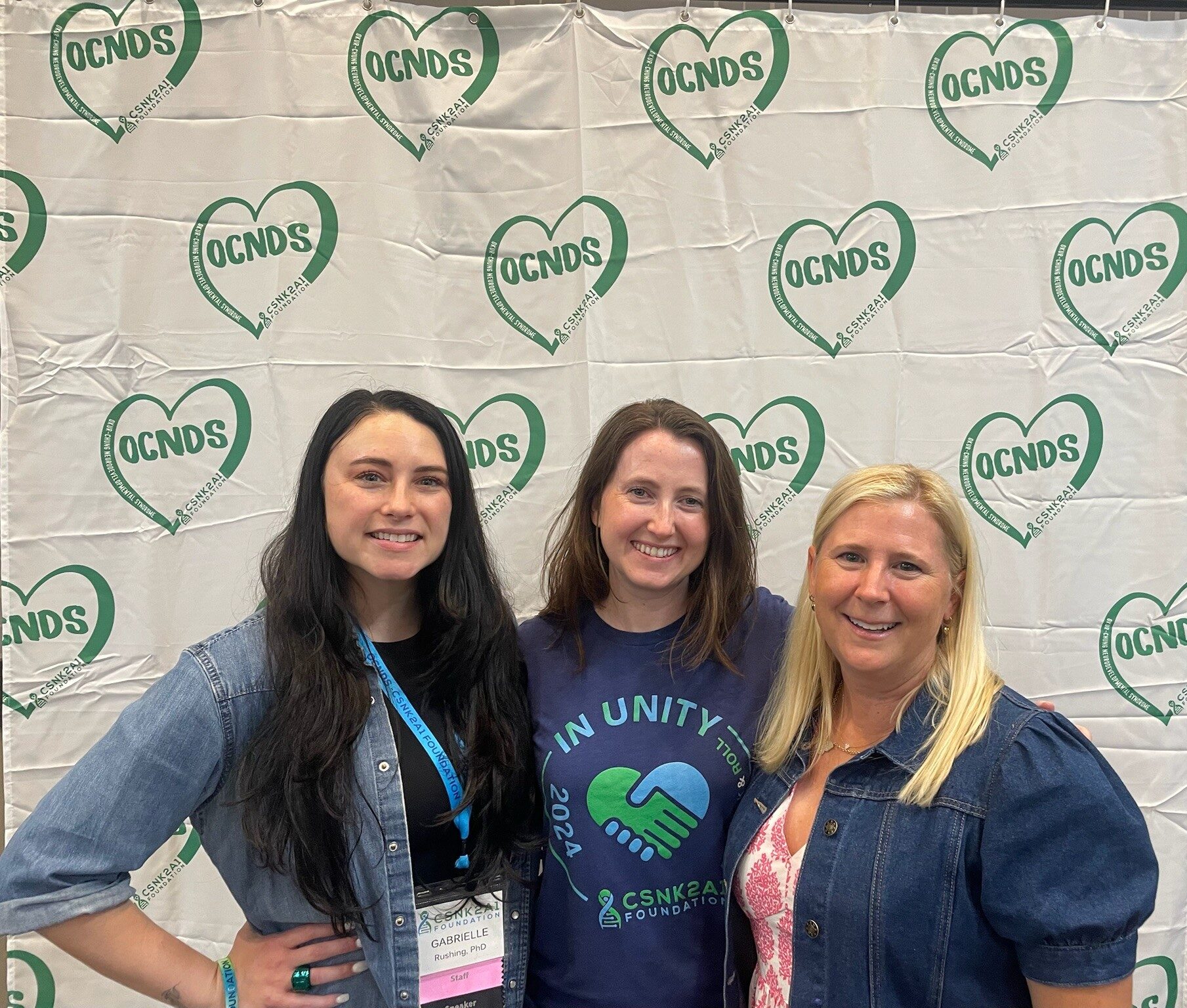
Leading the Way: A Joint Interview with Jennifer Sills & Gabrielle Rushing
"Luck favors the prepared.” We can’t control the randomness of genetics, but we can control how ready we are to meet it—with courage, science, and community.
Jennifer Sills, President, CSNK2A1 FoundationIn our “Leading the Way” series, we highlight the inspiring work of patient advocacy group (PAG) community leaders. This month, we’re featuring Jennifer Sills, President, and Dr. Gabrielle Rushing, Chief Scientific Officer, of the CSNK2A1 Foundation. They share their journeys into rare disease advocacy and research, their leadership insights, and the incredible progress made by the Okur-Chung Neurodevelopmental Syndrome (OCNDS) community.
1. Can you tell us a little about yourself, your family, and your journey into the world of patient advocacy?
Jennifer: When I was pregnant with our daughter, Jules, I used to daydream about her future: sleepovers, friendships, college, love, and a joyful, independent life. She was born with ten fingers, ten toes, I breathed a sigh of relief and I thought we were lucky.
What I didn’t know was that even seemingly healthy babies can carry hidden genetic changes, mutations that don’t reveal themselves right away, but eventually change everything. In 2016, Jules became the sixth person in the world diagnosed with Okur-Chung Neurodevelopmental Syndrome (OCNDS). At that time, there was no foundation, no research, no community: just one academic paper and a pat on the back with, “Good luck.”
But luck was never going to be enough. My favorite saying has always been, “Luck favors the prepared.” Prepared people don’t wait; they build, they connect, they fight like hell. So in 2018, we launched the CSNK2A1 Foundation to make sure no parent ever heard those words again without a roadmap, a plan, and a community standing beside them.
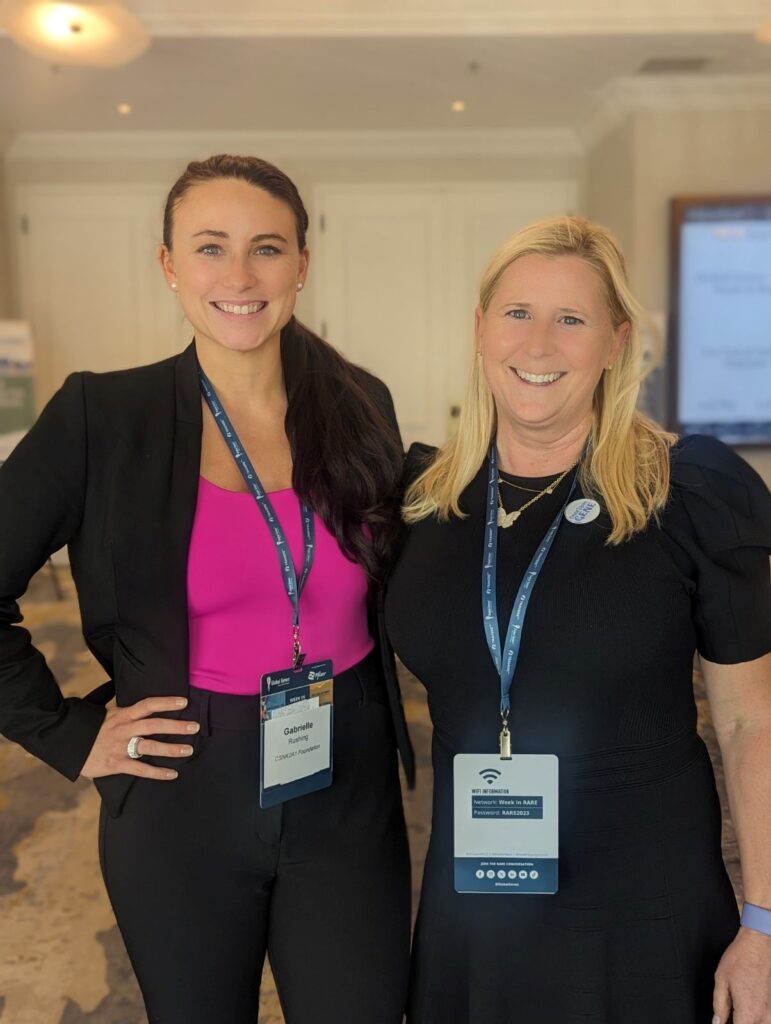 Gabrielle: I earned my Ph.D. in neuroscience from Vanderbilt University, where I became fascinated by how molecular discoveries translate into better outcomes for patients. During graduate school, I interned with the Tuberous Sclerosis Complex (TSC) Alliance through Vanderbilt’s ASPIRE program and helped organize a patient-focused drug development meeting with the FDA. It shifted my view of research from being about data generation to being about impact and how every study, survey, and sample connects back to lived experience.
Gabrielle: I earned my Ph.D. in neuroscience from Vanderbilt University, where I became fascinated by how molecular discoveries translate into better outcomes for patients. During graduate school, I interned with the Tuberous Sclerosis Complex (TSC) Alliance through Vanderbilt’s ASPIRE program and helped organize a patient-focused drug development meeting with the FDA. It shifted my view of research from being about data generation to being about impact and how every study, survey, and sample connects back to lived experience.
I also served as Consulting Research Director for the Thisbe & Noah Scott Foundation during graduate school, where I supported early-stage rare disease research initiatives and strategic collaborations. After completing my Ph.D., I joined the TSC Alliance full time, where I progressed from Associate Director to Director of Research, leading efforts in natural history and biosample studies, data sharing/analysis, and clinical trial readiness.
I moved from a large, well-established organization to a very lean organization when I transitioned to working at the CSNK2A1 Foundation as their very first full-time employee. I was seeking growth opportunities where I could have more autonomy and be at the forefront of creating the infrastructure to facilitate progress. When I interviewed with Jennifer, we immediately ‘clicked’, and I knew I had found my new home base. One of my proudest achievements at this organization has been mentoring our growing internship program which has now hosted 17 interns. Since I started as an intern in rare disease, building opportunities for students to learn, lead, and bring empathy into science is my way of giving back while also gaining valuable mentorship experience that I otherwise would not have had.
2. Could you share your family’s experience with your child’s OCNDS diagnosis and how you navigated those early days?
Jennifer: The diagnosis changed everything. Jules is clever, strong-willed, and a budding chef, but she’s also minimally verbal, with global developmental delays, autism, severe sleep issues, and self-injurious behaviors. The early days were filled with fear and uncertainty—and many days still are.
I navigated those first months by simply putting one foot in front of the other and taking action. I went to therapy. I cried. And I felt profoundly isolated watching friends celebrate milestones while we were praying for inchstones.
But over time, that isolation became motivation. My husband and I decided we wouldn’t just survive this—we’d prepare, connect, and build. Jules’ little brother, Jasper, also found meaning in it. When he was six, he saw a child with visible disabilities and whispered, “Mom, you should tell them about the foundation.” Even then, he understood that hope grows through community.
I also took stock of my own skills and asked myself how I could use them to create change. As an attorney and early-stage investor, I knew how to structure things, build relationships, and mobilize resources. So I applied what I knew to create a pathway toward treatment for Jules and for everyone like her. I started attending rare disease conferences, meeting with dozens of organizations, old and new, big and small, to learn everything I could about what worked and what didn’t. Every conversation, every late-night note, every hard lesson became part of the blueprint for the CSNK2A1 Foundation.
Gabrielle: Those early families, like Jennifer’s, are the backbone of rare disease research. Their courage to share their stories created the foundation of everything we now know about OCNDS. Their lived experience shaped our scientific roadmap from day one.
3. Your leadership with the CSNK2A1 Foundation has made and continues to make a significant impact. What inspired you to step into that role?
Jennifer: My first real lesson in “Rare Disease 101” came during a call with Dr. Wendy Chung after we received our diagnosis. I had two pages of questions, but we only made it through four before she told me the hard truth: in rare disease, it’s the families who shoulder the burden of driving research forward. That conversation changed everything for me.
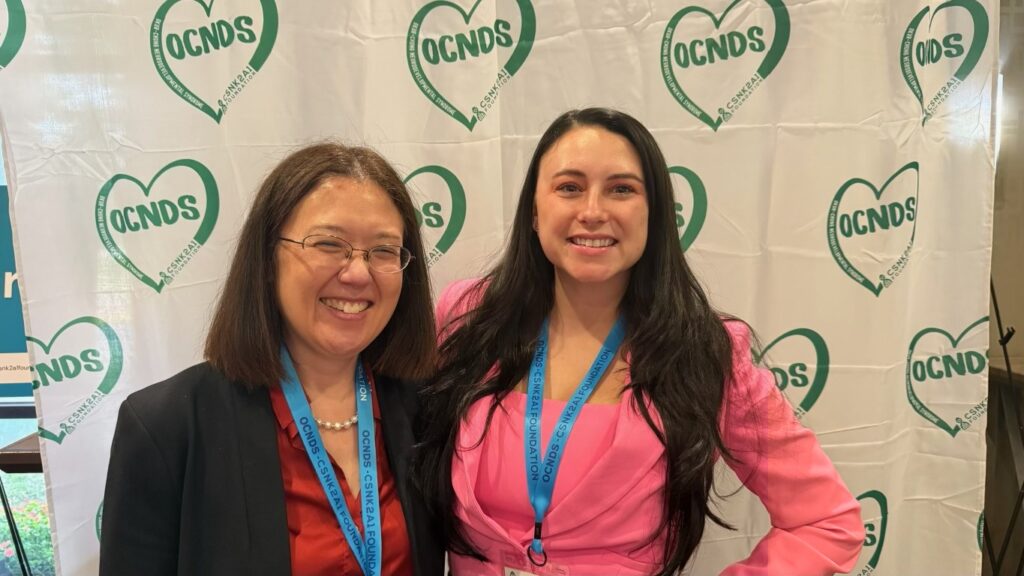
I never set out to lead a rare disease organization, but if I didn’t, who would? At the time, there were no companies interested, no dedicated researchers, and only five other people in the world we knew of with OCNDS. So I stepped into leadership out of necessity, fueled by both love and urgency.
My leadership philosophy is what I call “old school meets new school.” We invest in traditional research, the foundational work that builds understanding, but we also push for innovation, partnerships, and new ways of thinking about how to treat rare disease. I believe the best progress happens when scientific rigor and creative problem-solving move forward together.
Gabrielle: I came from large, well-established institutions where the systems were already built, but what drew me to the CSNK2A1 Foundation was the chance to build something from the ground up. This was an opportunity to create the very infrastructure that accelerates breakthroughs. Furthermore, after meeting Jennifer, I could tell we were similar in that we both don’t let a “no” stop us from moving forward. We try to merge “out of the box” thinking with traditional problem-solving and work well together to move things forward. Additionally, at the time of my interview in 2023, the foundation was ~5 years old and had already made incredible progress building boards, establishing a research toolbox, and connecting scientists in the field which gave me confidence that I could make an impact quickly.
Since joining, I’ve worked to formalize our research roadmap, expand collaborations across academic and industry partners, and strengthen how we collect and share data globally. I’ve also been passionate about growing our internship program, which now includes students who are learning that science can have great impact. Watching these young scientists contribute to our mission reminds me that we’re not just advancing discovery, we’re shaping the next generation of advocates who will carry this work forward.
Jennifer, guided by our board of directors, a group of accomplished professionals who bring expertise from law, policy, finance, and healthcare, rather than lived experience with OCNDS, made a bold and forward-thinking decision to invest in capacity. That choice has already paid dividends. It has allowed us to connect the dots between families, clinicians, and researchers and to move from small wins to real scientific momentum. It is proof that when you invest in people and structure, you build something that lasts.
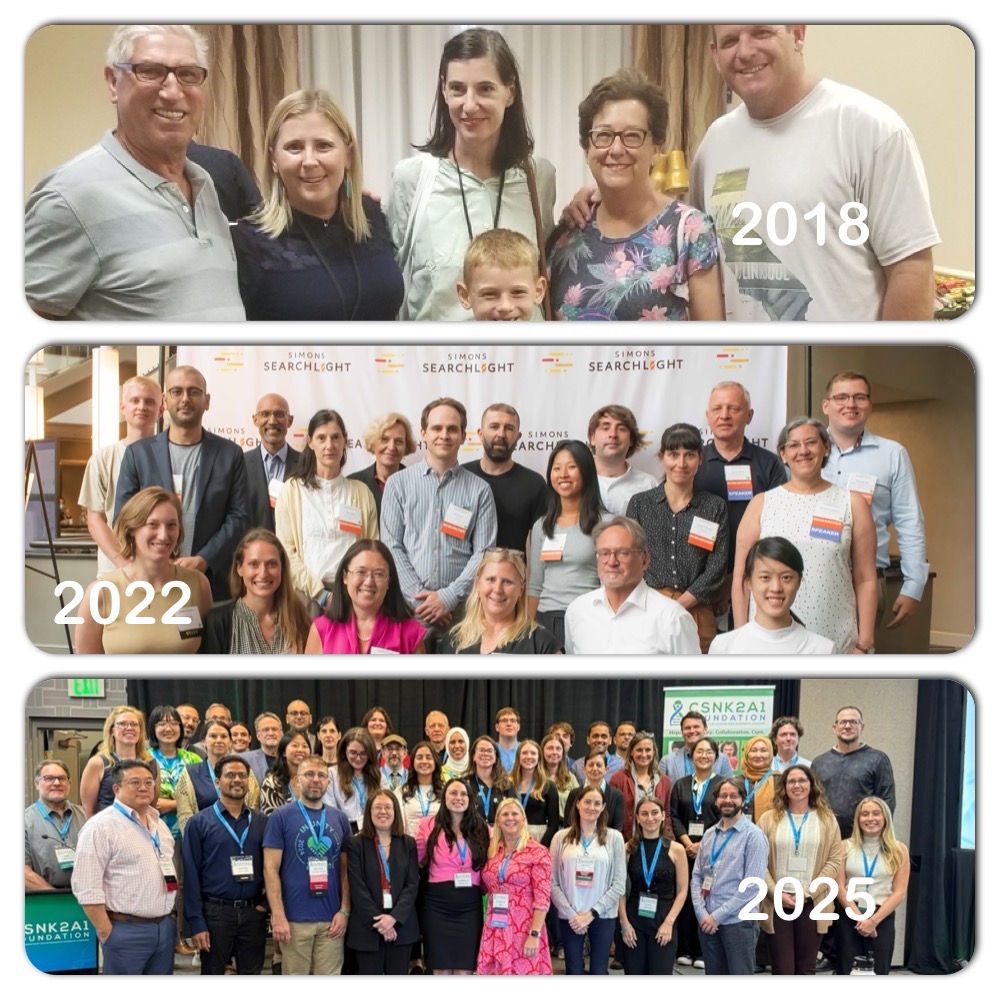
4. Is there a moment or achievement from your time with the CSNK2A1 Foundation that stands out as especially meaningful?
Jennifer: There are so many moments that take my breath away. Watching families from 44 countries join our calls in 28 languages. Seeing scientists, clinicians, and parents stand side by side at our Connect + Collaborate Conference this summer in Denver. Meeting a family from Brazil who traveled across continents just to meet others who “get it.” Those moments remind me that we’re building something far bigger than data; we’re building belonging.
But one moment stands out above the rest: hiring Dr. Gabrielle Rushing. I’ve never cried at work before, but that day I did. In my wildest dreams, I never imagined we’d have enough funding to hire a full-time scientist. It was a defining moment: the shift from being a passionate, parent-led effort to becoming a true, innovative startup foundation.
In just seven years, we’ve gone from six diagnosed patients to more than 350, from 1 publication to over 44, from no research funding to over $1 million invested in science, and from zero staff to a growing team. That’s not luck: that’s preparation turned into progress.
But meaningful change doesn’t always happen in a lab. It looks different for every OCNDS family. While we are working toward treatments and a cure, part of our mission is to make tangible, everyday improvements in quality of life.
One story that stays with me forever is from our first in-person family meeting in 2018. A family from Brazil had never been on a plane before. They raised the money to attend because they were desperate to connect. Over the weekend, a translator accompanied them everywhere, helping them navigate a completely new environment. During a break, they visited a local Target store and saw something they’d never encountered before: a sippy cup. The translator explained that it helps children learn to drink independently. They bought one, brought it back to the conference, filled it with water, and handed it to their son, who had never taken water by mouth.
He drank successfully.
Today, his mother sends videos of him practicing taking food and water by mouth. If he continues to progress, he may one day have his G-tube removed. That single moment, a child drinking from a cup for the first time, represents exactly what we’re fighting for: meaningful change. Not just in data points or lab results, but in daily lives.
Gabrielle: One of the most meaningful moments was organizing and leading our FDA Patient Listening Session last year. Hearing caregivers speak directly to regulators about what daily life looks like, what symptoms impact them most, and what they hope future treatments will achieve was incredibly powerful.
Another experience was at my first golf tournament fundraiser with the foundation, there was a moment that perfectly captured why I believe so deeply in the “bee” philosophy – the idea that small, intentional efforts can create lasting change. Between holes, one of the golfers struck up a conversation with me about their child, who didn’t have OCNDS but faced other unexplained challenges. We talked for maybe six minutes about different types of genetic testing and available resources, and I later connected with their spouse over text to share a few more ideas. That evening, during the live auction, this individual bid over $10,000 on a package and won. When I thanked them, they said, “I bid on this because of you.” When I asked why, they explained that it was because I had taken the time to listen and offer immediate, practical guidance for their family. That moment reminded me that advocacy isn’t just about large-scale initiatives but rather, it’s about small acts of care and connection that can ripple outward in ways we may never fully see.

5. From planning patient advocacy and research conferences, what key lessons or best practices would you share with others?
Jennifer: There’s no one-size-fits-all approach to rare disease. Just like parenting, you take in all the information, learn from others, and then figure out what works for your own community.
Listen to your community constantly. Keep asking, “Is this working for you?” Someone else’s roadmap may not fit your community and that’s okay. Create your own path, guided by the people you serve.
Our Parent Advisory Board is separate from our Board of Directors, and that’s intentional. We don’t want our parent advisors bogged down in governance or budgets. Their role is to be the voice and proxy for our community as we shape programs and make research decisions. They test every new idea before it reaches the community, ensuring that our language, tone, and resources are accessible and meaningful. They are our compass, keeping us grounded in the lived experience of OCNDS.
And if you don’t have a Parent Advisory Board, that’s okay. You don’t need something formal. But create something: a circle, a council, a consistent feedback loop, so that lived experience guides your decisions every step of the way.
Gabrielle: One of the biggest lessons I’ve learned is that the most impactful conferences are those designed with, not just for, the community. In rare disease advocacy, every meeting should create space where families, clinicians, and researchers can learn from one another as equals. Co-creation including inviting input early, shaping sessions around shared priorities, and ensuring diverse voices are represented, transforms an event from a series of presentations into a true catalyst for collaboration.
Another key best practice is intentional integration between the scientific and family components. Rather than treating them as fully separate tracks, we weave them together whenever possible to pair research updates with family panels, providing lay summaries of talks, and encouraging open dialogue between scientists and caregivers. This approach builds mutual understanding and sparks new ideas for patient-centered studies. Lastly, follow-through matters. The conference shouldn’t end when the sessions do. Capturing insights in plain language summaries, turning discussions into tangible action items, and reporting back to participants closes the loop and builds trust.
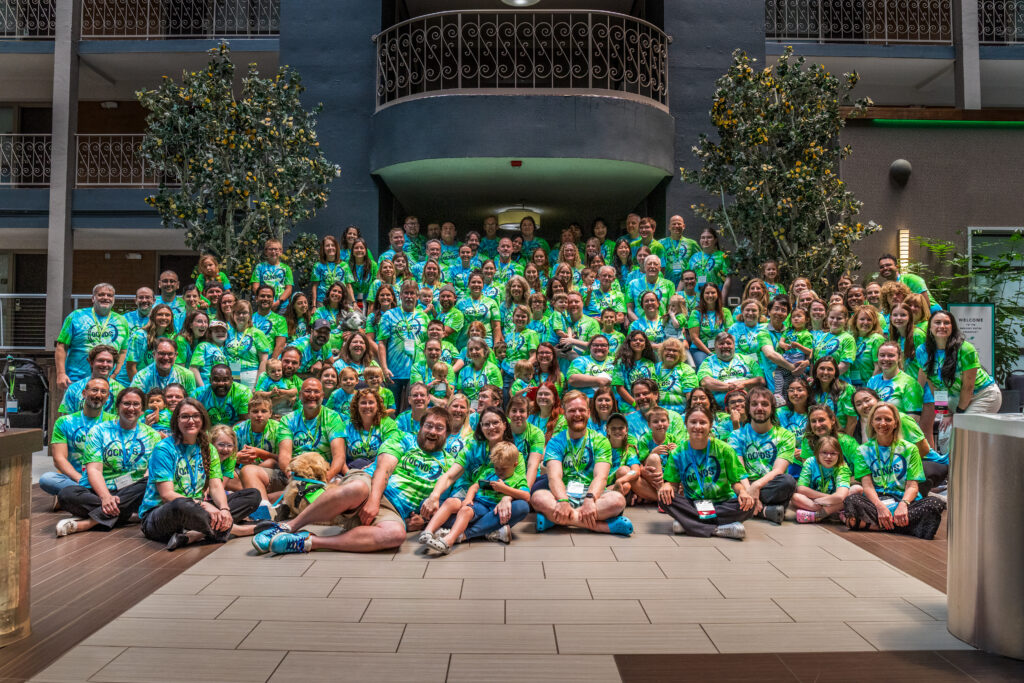
6. Could you provide insights into the challenges you’ve encountered while advocating for individuals with OCNDS? How have you managed to overcome them, and what lessons have you learned along the way?
Jennifer: There are endless challenges in rare disease advocacy: finding newly diagnosed families, identifying clinical champions, and convincing funders that small numbers still deserve big science. The hardest part is the invisibility. We’ve had to earn every ounce of credibility and legitimacy.
What I’ve learned is that credibility grows from consistency. When you show up prepared, again and again, people notice. Over time, the calls get returned, partners join the table, and families begin to feel seen.
Gabrielle: One of the biggest challenges in advocating for individuals with OCNDS is that we are still at the very early stages of understanding the condition. Because it was only discovered in 2016, much of our work involves building the research infrastructure from scratch including creating registries, developing natural history studies, and connecting scientists who may never have heard of the CSNK2A1 gene before. It can feel daunting to push forward in a space where so much remains unknown.
Furthermore, coming from a large organization, I had to adjust to working in a startup environment with fewer resources but more agility. We’ve learned to prioritize high-impact projects, build partnerships, and trust the power of collaboration. I now know that I don’t need a huge lab or 20 clinics to create change; we need focused, prepared people who believe in the mission.
7. Which resources, networks, or tools have been most helpful to you as a parent, advocate, and researcher?
Jennifer: So many! I’ve learned that no one person or organization can do it alone. It takes a community of connectors and doers. Other rare leaders have been my lifeline; they understand in ways no one else can. Our closed OCNDS Facebook group has become a safe space to share, learn, and problem-solve together.
Both the Global Genes RARE Advocacy Summit and Drug Symposium are other resources I return to again and again. It’s an incredible place to meet leaders across the rare disease space, exchange ideas, and leave reenergized with new strategies. Podcasts like Once Upon a Gene hosted by Effie Parks keep me grounded and inspired by reminding me that behind every diagnosis is a story, a family, and hope.
As an advocate, the Rare Advocate Development (RAD) Brain Workshop has been an incredible source of knowledge and mentorship. It helped me understand what it truly takes to bring a treatment to our kids, from building partnerships and preparing for regulatory pathways to sustaining momentum as a patient-led organization.
As an advocate, I also rely on networks like CombinedBrain, which connects rare disease foundations working on neurodevelopmental conditions, and Simons Searchlight, whose quarterly summary reports help us understand how common or uncommon specific symptoms are within the OCNDS population.
Gabrielle: Partnerships with TGen, Vanderbilt University, Unravel Biosciences, the JumpStart Program, and global academic collaborators have been instrumental in advancing our research and expanding what’s possible for a small foundation. Equally important, our internship program has become a powerful tool for capacity building. Attending and presenting at scientific and advocacy conferences has also been a vital part of our growth, helping us build relationships, identify new collaborators, and amplify the visibility of OCNDS within the broader rare disease and neuroscience communities. Together, these partnerships and programs ensure that scientific progress remains deeply connected to the human stories that drive it.
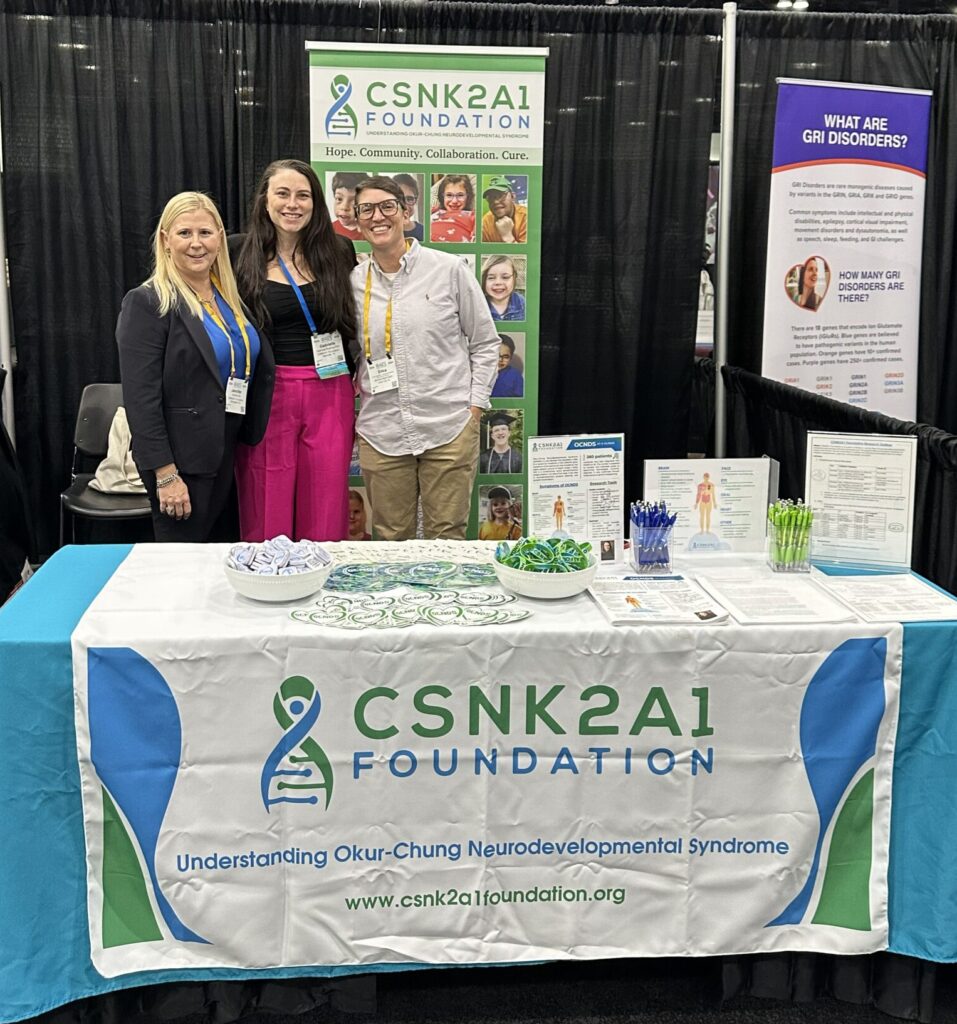
8. How has Simons Searchlight been a resource for your community?
Jennifer: Simons Searchlight was our lifeline in the early days. It gave us a trusted platform to collect and share data when we didn’t yet have the infrastructure or funding to do it ourselves. We didn’t need to reinvent the wheel; they already had a well-established system, including a biorepository to securely store patient samples and share them with qualified researchers around the world.
They’ve gone above and beyond for our community. Simons Searchlight created nine induced pluripotent stem cell (iPSC) lines from OCNDS participants, which are now available to researchers studying the CSNK2A1 gene. They’ve also provided conference support—both financial and physical—by attending our meetings, presenting updates, and engaging directly with families and scientists.
And the partnership continues to grow. Dr. Gabrielle Rushing recently published a paper using data from Simons Searchlight, advancing our understanding of the OCNDS clinical landscape and helping define the next phase of research priorities.
Simons Searchlight turned what once felt like isolation into collaboration. It gave us credibility, structure, and a scientific home to build from, and that partnership continues to accelerate our path toward answers and treatments.
Gabrielle: Simons Searchlight has been an essential resource for the CSNK2A1 Foundation. Most recently, we published the first peer-reviewed natural history analysis of OCNDS using Simons Searchlight data in Frontiers in Human Neuroscience (Bagatelas, Khan, & Rushing, 2025). This study revealed that certain CSNK2A1 variants, particularly those in conserved loop regions of the protein, are associated with earlier diagnoses, higher rates of hypotonia, and a greater neurological symptom burden. These kinds of insights are only possible because families took the time to share their information and experiences through the Simons Searchlight platform.
Beyond the science, Simons Searchlight helps us respond to the real questions that families ask every day; things like, “Is this symptom common?” or “Are other children with the same variant experiencing this too?” Having access to these aggregated data allows us to turn those questions into answerable research projects.
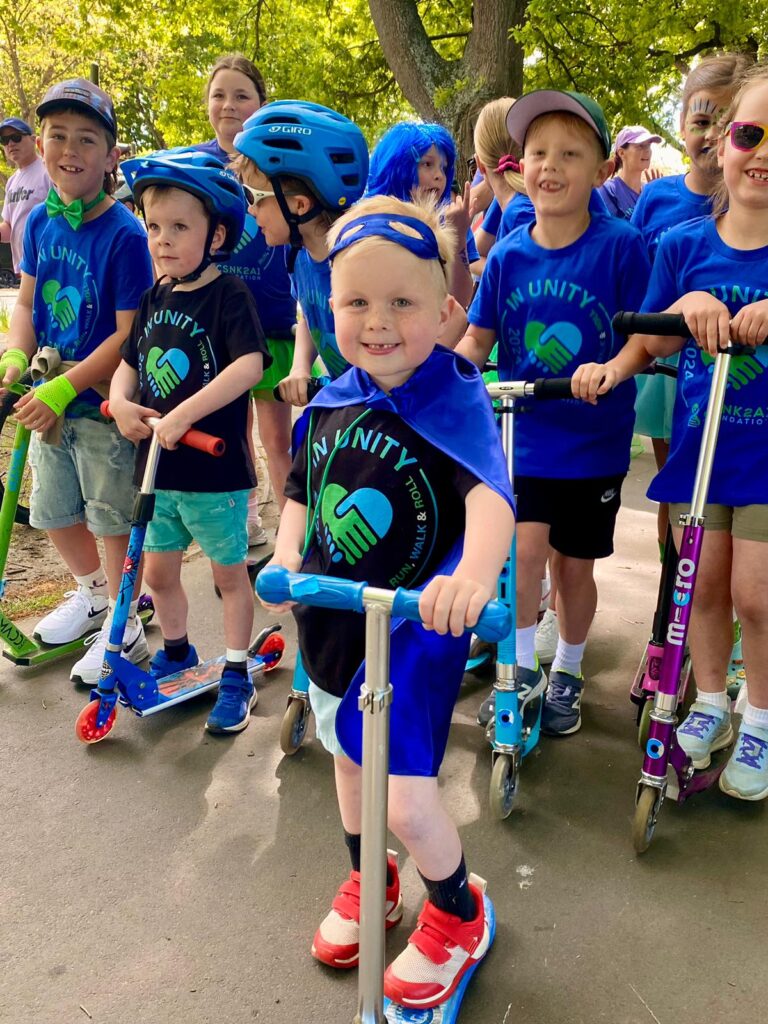
9. What is your mantra or source of motivation that keeps you going as both a parent and a patient advocacy leader?
Jennifer: “Luck favors the prepared.” We can’t control the randomness of genetics, but we can control how ready we are to meet it—with courage, science, and community.
What keeps me going is the belief that the time is now. Diseases once thought to be untreatable are finally being treated. The science is here. It’s not a question of if—it’s a question of when. That’s pretty incredible if you think about it. We’re living in a scientific revolution, and I refuse for our children to be left behind.
I work seven days a week, often at all hours, but it’s worth it because every email, every meeting, every late night brings us one step closer to meaningful change.
Gabrielle: “Science moves forward through connection. Small, consistent acts of curiosity and compassion create the biggest breakthroughs.”
In advocacy, not every effort leads to immediate change, but each conversation, email, and connection plants a seed that helps something larger grow. I’ve seen firsthand how taking a few minutes to listen to one family or share one resource can spark momentum that transforms lives and fuels discovery. In rare disease work, it’s easy to feel overwhelmed by the scale of unmet needs; but remembering the bee encourages me to focus on what I can do today, no matter how modest, and trust that in aggregate, those efforts contribute to real change. So, while Jennifer’s mantra reminds us that luck favors the prepared, the bee reminds me that prepared people, working together, change ecosystems.
10. Is there anything else you’d like to share with the Simons Searchlight community or with families who may just be starting their own journey?
Jennifer: You’re not alone. Even if your diagnosis feels isolating right now, connection will expand your world. Join the registry, come to the calls, reach out. Every small action builds something bigger than you can see.
And here’s what I’ve learned: the bad times are going to feel awful, like the worst of times. They just are. There will be days when it feels like it will never end. But if you stop and take stock, most days are still 80% good and 20% hard. You have to fight like hell to focus on that 80%. Because this life will bury you, it will stretch you in ways you never imagined. None of us signed up for this, but together, we can make it better.
Gabrielle: For families who are just beginning their journey, I want to say: you don’t have to have it all figured out right away. Every story shared, every survey completed, every connection made contributes to something bigger than any one of us. What may feel like a small act like joining a registry, attending a webinar, or talking with another parent, can ultimately move science forward in ways you might not see immediately.
Learn more about the CSNK2A1 Foundation: www.csnk2a1foundation.org
Stay connected with Simons Searchlight
Join our newsletter to receive updates
